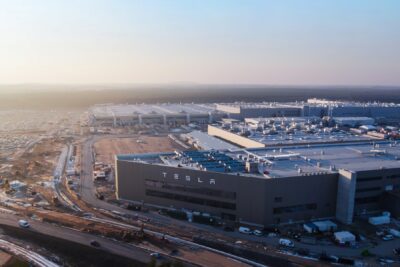BAM inicia las pruebas con una estación de servicio de hidrógeno de investigación con monitorización digital
Según BAM, es la única estación de servicio de investigación de H2 de este tipo en Alemania. Se construyó en el Centro de Pruebas de Seguridad Técnica (TTS) de Horstwalde/Baruth, en Brandeburgo, donde BAM lleva a cabo experimentos a escala real desde principios de los años noventa. La instalación permite probar todos los procesos técnicos que intervienen en una estación de llenado de hidrógeno en condiciones realistas, al tiempo que se pueden investigar a fondo aspectos de seguridad como las fugas y la tensión de los materiales.
"La planta nos permite optimizar tecnologías digitales innovadoras para la supervisión del proceso, la garantía de calidad y la planificación del mantenimiento", afirma el instituto. Se espera que los resultados mejoren significativamente la disponibilidad y la rentabilidad de estas instalaciones y aumenten así la aceptación pública de la infraestructura del hidrógeno.
La estación de investigación BAM se abastece de hidrógeno verde con su propio electrolizador, que más adelante se alimentará con electricidad procedente de un sistema fotovoltaico. Hasta entonces, se suministrará hidrógeno verde. Todos los procesos pueden supervisarse en línea en tiempo real, con sensores que capturan los datos operativos para su uso en modelos digitales y gemelos.
"En proyectos de colaboración con la industria y el mundo académico, queremos abordar cuestiones de investigación relacionadas con la calidad y la seguridad", afirma Frank Wille, director de la división de Embalaje de Mercancías Peligrosas y Almacenamiento de Energía de BAM. "Nuestro objetivo es optimizar los ciclos de mantenimiento, detectar condiciones críticas en una fase temprana y seguir desarrollando normas de calidad y seguridad para estaciones de llenado de hidrógeno fiables". Al mismo tiempo, la estación de investigación sirve como laboratorio ideal del mundo real para probar todos los elementos de la futura garantía de calidad digital."
El piloto forma parte de la iniciativa "Infraestructura Digital de Calidad" y está integrado en el centro de competencia de hidrógeno de BAM (H2Safety@BAM), donde se investigan los aspectos de seguridad de las modernas tecnologías del hidrógeno. El laboratorio del mundo real está abierto a la industria, las PYME y las empresas emergentes para probar productos digitales de nuevo desarrollo dentro de una infraestructura real de H2.
Los temas de investigación previstos incluyen:
- mapeo digital de procesos a lo largo de toda la cadena de valor de la estación de servicio;
- Adquisición y análisis de datos basados en sensores; desarrollo de infraestructuras de datos; creación de gemelos digitales; supervisión de la seguridad en línea;
- Desarrollar elementos estructurales digitales para la infraestructura de calidad (IC), como la nube de IC y los certificados digitales;
- mantenimiento predictivo para la supervisión del estado y el envejecimiento; y uso de cáscaras de administración como herramientas de mejora de la calidad
La estación de servicio real del centro de pruebas de Brandeburgo consta de un compresor, depósitos de almacenamiento intermedio, refrigeradores de gas y surtidores para suministrar hidrógeno a un vehículo. El "cliente" es un FCEV propulsado por hidrógeno. Según una foto de prensa facilitada por BAM, parece ser un Hyundai Nexo.
Un aspecto importante del proyecto es la integración de la tecnología de control de procesos y los sensores adicionales en una plataforma de hardware local. "Se utilizan conceptos actuales de las industrias de procesos, como la arquitectura abierta NAMUR", afirman los iniciadores. Los datos recogidos alimentarán los modelos digitales para generar más información, actualizar los modelos y reparametrizar el hardware. Este subproyecto constituye el vínculo entre el hardware del laboratorio y el suministro seguro de datos en la interfaz del espacio de datos QI.
bam.de (en alemán)





0 Comentarios